We’ve been exploring around the South Island for the past few days and its been quite the adventure. We landed in Queenstown long enough to stock up on groceries and pick up some camping equipment and then hit the road. We have a new rental, a compact SUV that were planning to drive all the way back to Auckland over the next month.
Our first stop out of Queenstown was Mount Cook National park, about a 3.5 hour drive according to Google. It took us closer to 5 hours, but we stopped a lot for photos, plus a lunch break. The weather made it an eventful drive. It rained for the first 3 hours, but not enough to put a damper on the views. Even in the rain we were in awe of the mountain road. It’s just as winding as the roads on great barrier island, but fortunately wider. We were particularly impressed by our drive through the Lindis pass, which runs along the valley between the barren mountains north of Cromwell.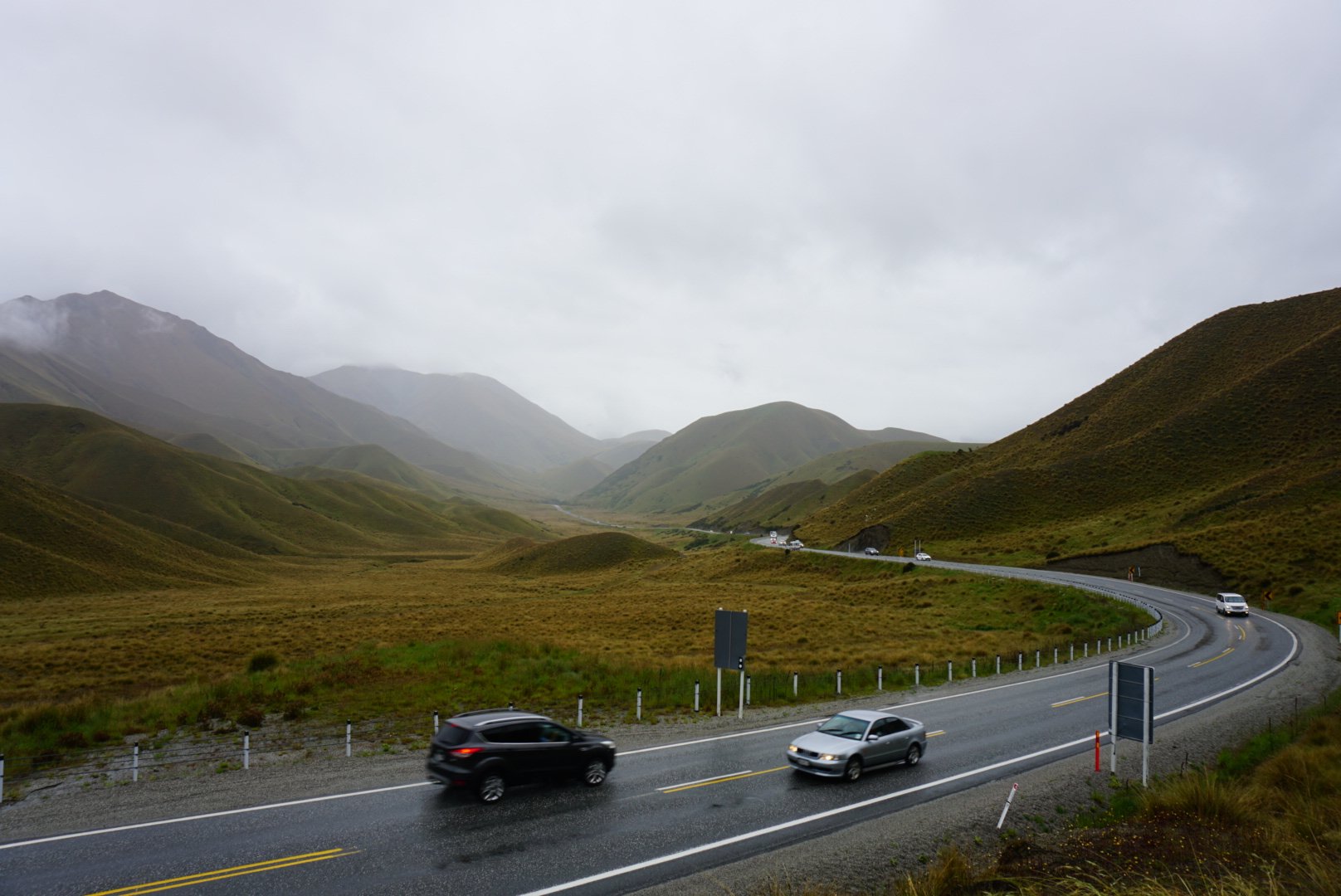
We had originally planned to do this part of the trip later in our itinerary, but I really wanted to see some of the lupins New Zealand is famous for, so I rearranged our plans to put us in the inland south island as soon in the trip as possible. The lupin season is late November, early December, so I wasnt sure if we might still miss them. It might not have been peak season, but there were still tons of lupins around, especially coming out of the Lindis Pass and I was constantly pulling over to take photos of fields of them along the sides of the road.
The rain finally let up when we hit Lake Pukaki and we decided to pull in to the visitor centre for lunch. We had brought out own sandwiches, but apparently the lake is super popular for salmon, so there was a ton of salmon sashimi for sale there and nothing else.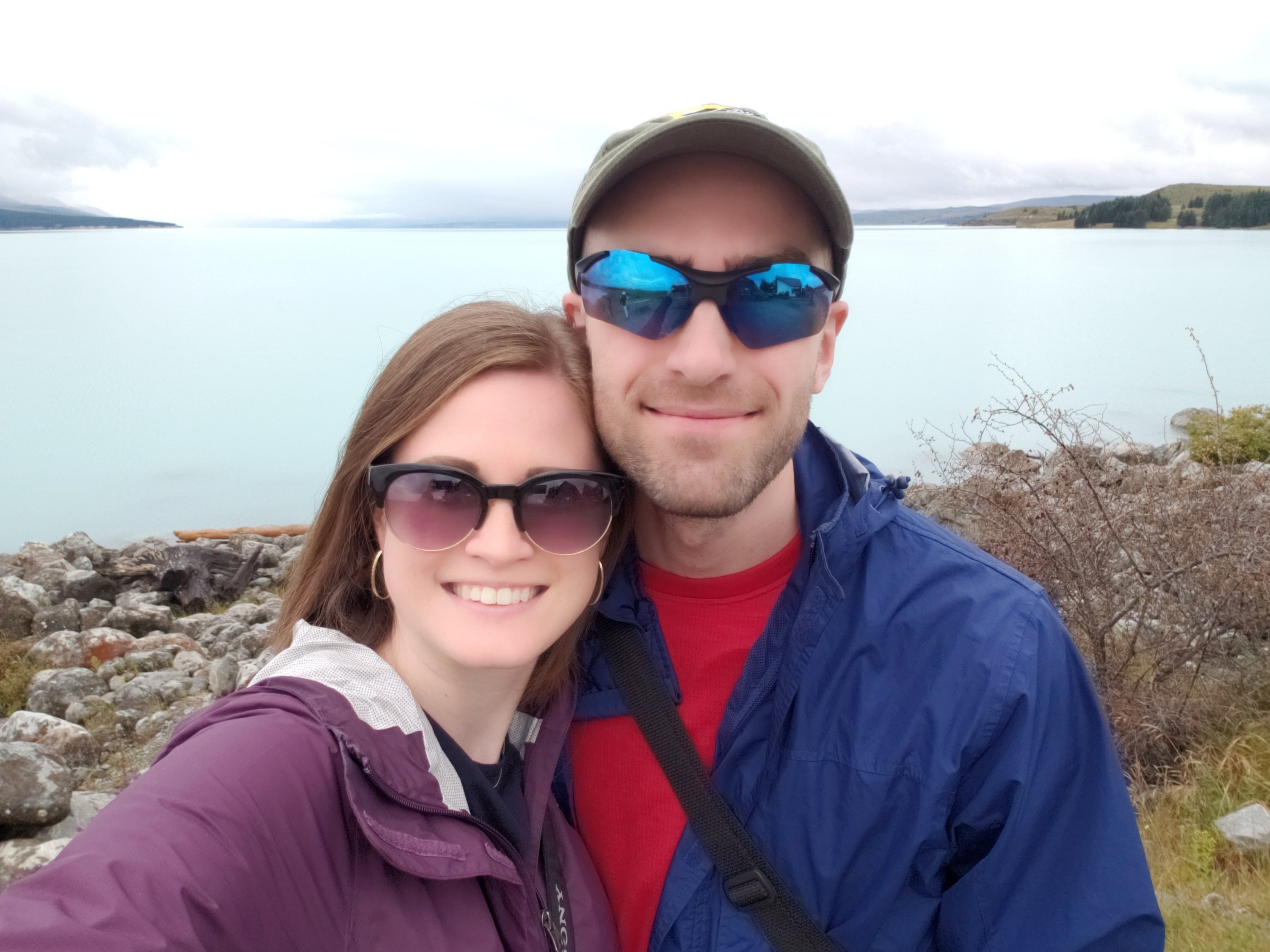
From there it was just one more hour to mount cook. The road winds its way up the rest of the lake and into the mountains, though we saw very little of it because, while the rain had finally let up, the clouds were still clinging to the mountains. We snagged a campsite at White Horse camp, which is right at the end of the valley at the base of the mountains. I had very mixed feelings about camping out there because I wasnt sure what the rain was going to do, but it is the only place to stay and we really wanted a chance to explore the park.
I assumed Mount Cook was so popular because it’s the tallest mountain in New Zealand and that was its appeal. That is the case, but it’s also super dangerous and seems to have become New Zealand’s Everest in its own way. While a lot of people like us flock to it just to see it and hike in the valley, the ruggedness of the mountain clearly holds its appeal for mountaineers. The visitor center had a lot of information about expeditions over the years and a very sobering memorial where they list everyone who has died on the mountain over the years. There were 5 volumes, with the most recent entry that had been completed being in 2018.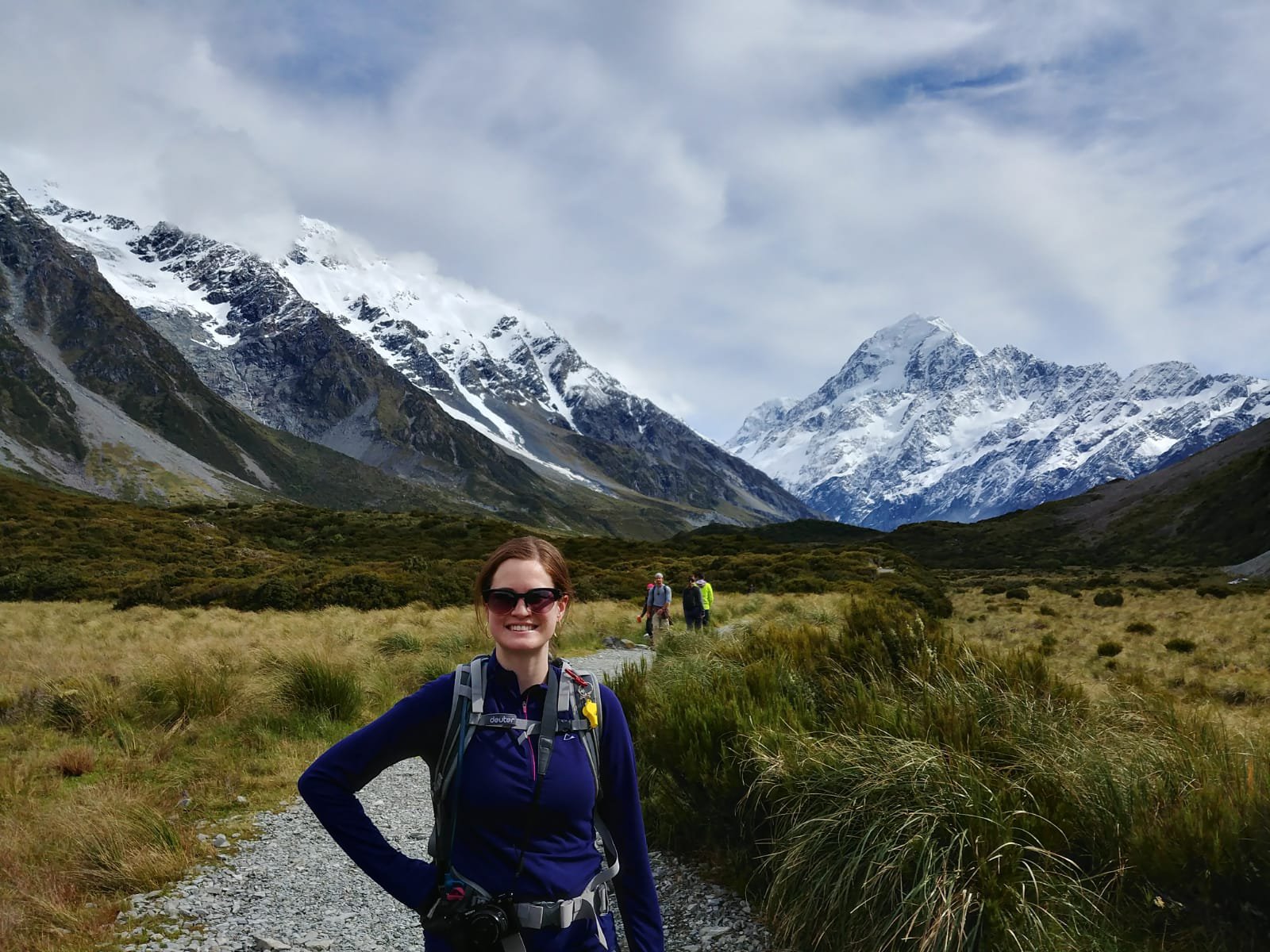
So with that reminder we headed out to do our own exploring. We made a go at the Tasman Lake hike, it’s not very long, maybe a kilometer or two, really more of a viewpoint. You hike up to a lake at the base of the glacier, which we could just make out, but it was mostly clouded in. It was an impressive look back at the valley though. Parts of the park were featured in Lord of the Rings and it’s not hard to tell it’s where Helms Deep was set.
The rain picked up again, so it was a pretty low key evening and a cold night in the tent, so we got started on a bottle of wine and went to bed early. But it was all worth it because the clouds and rain totally cleared off in the morning and we had a gorgeous day to hike the Hooker Valley Track in to the lake at the base of Mount Cook. It was exactly the kind of hike that I get excited about. It had 3 suspension bridges and unbelievable views of the surrounding mountains from everywhere on the trail. I’ve since noticed though that a lot of the hikes here seem to go through the mountain valleys rather then up and over them.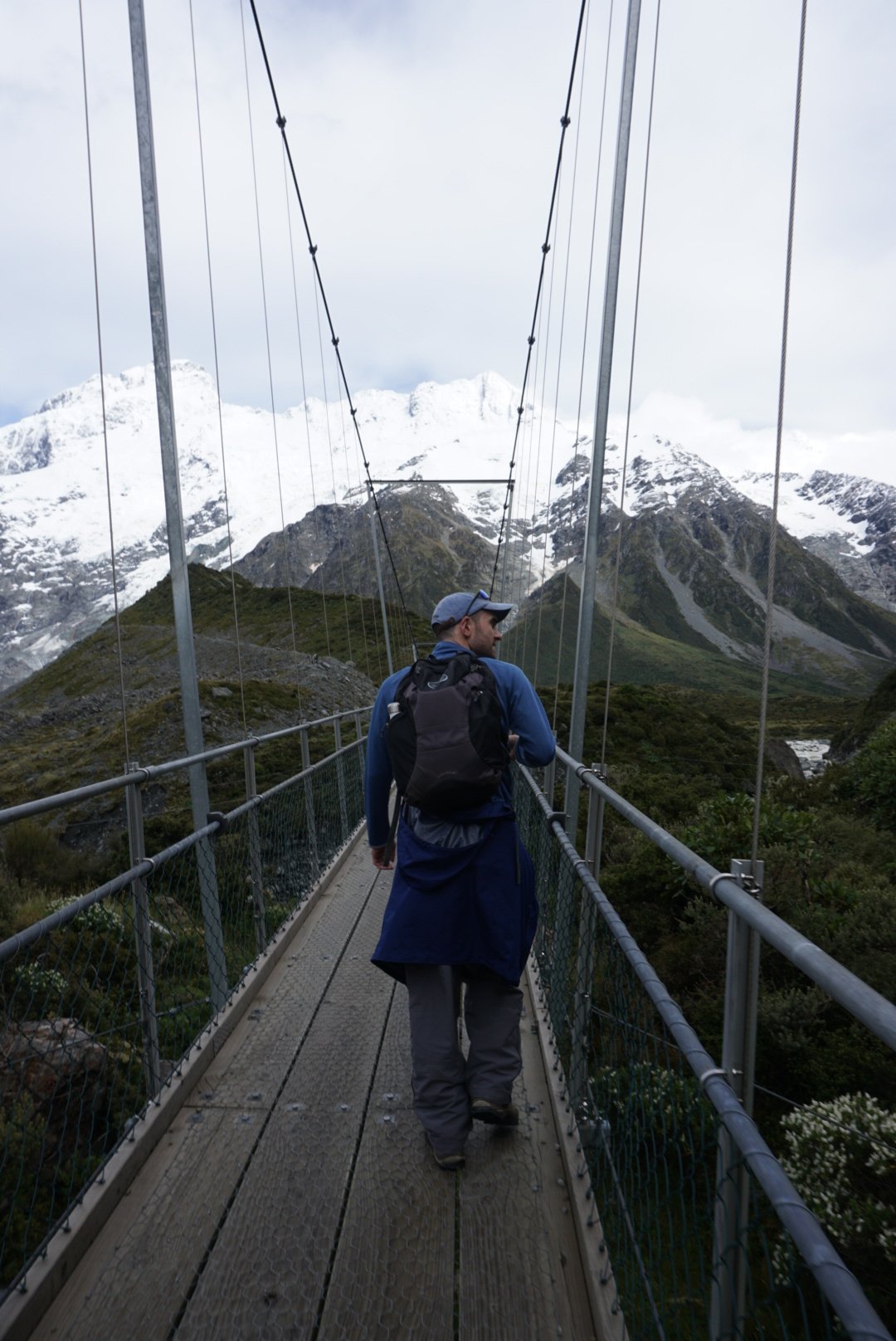
We made the most of the gorgeous weather and continued on to Tekapo where we were also tenting. We rolled in to town just in time to visit the infamous Church of the Good Shephard. It’s just a little stone church on the edge of the lake. I wasnt really expecting much, but it’s undeniably a beautiful church and I really enjoyed sitting inside it and listening to the worship music they had playing. It was very peaceful.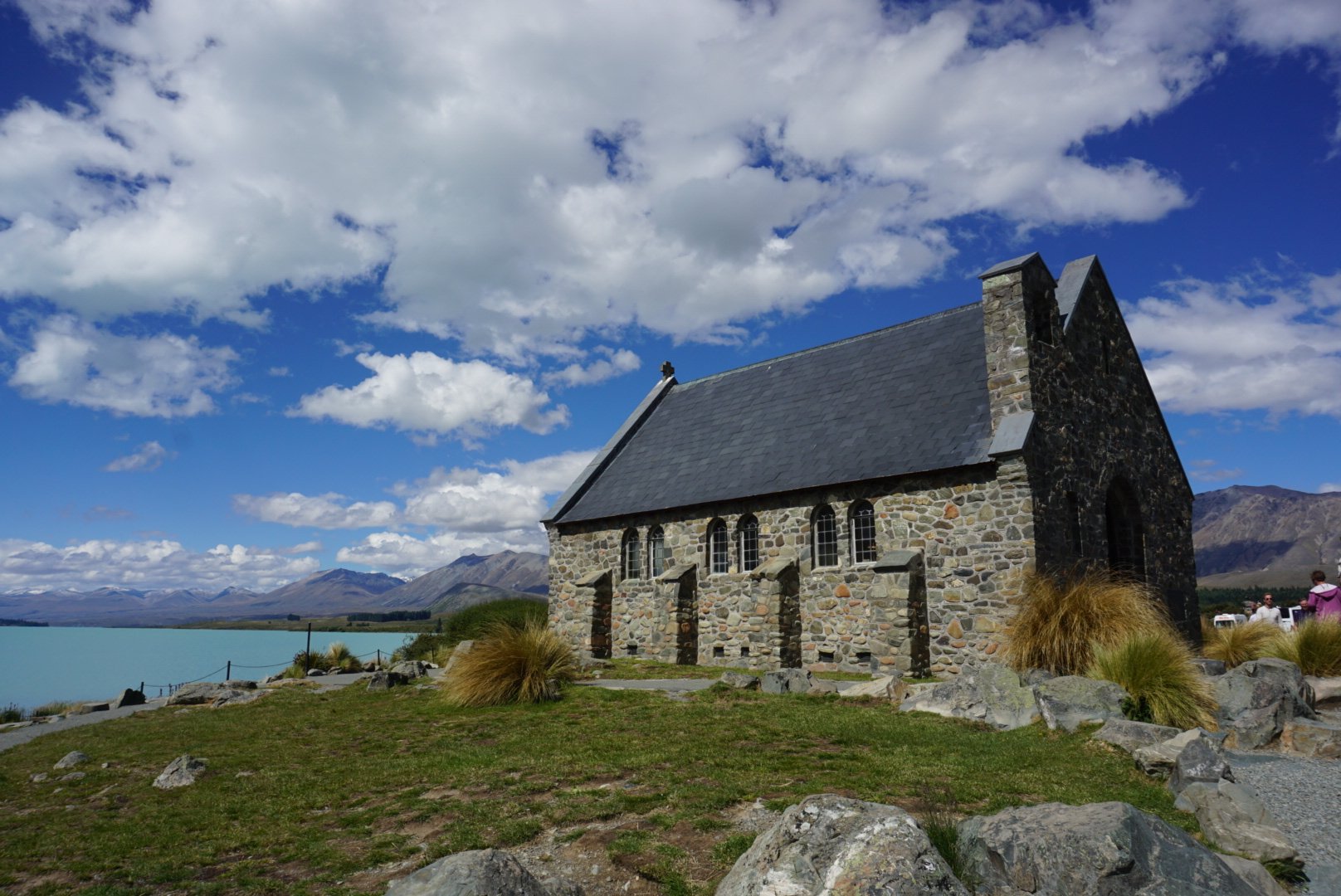
Our campsite was a tiny block of field at the holiday park surrounded by campervans, but we had our own little lupin patch and I had a lot of fun snapping photos in them. Our big plans for the evening were to visit the Mount John observatory, which is owned by the University of Caterbury, to do some star gazing. I booked the tour in advance and it cost a small fortune. The weather report overall was pretty bleak around that time, but the good weather of the day held out and we actually ended up with a cloudless sky in which to go stargazing. I really couldn’t believe our luck.
Stargazing wasnt until midnight so we popped into the Tekapo Springs to kill some time and relax a bit. It’s really a hot pool because its piped and definitely had none of the character of a natural springs, but it was still nice.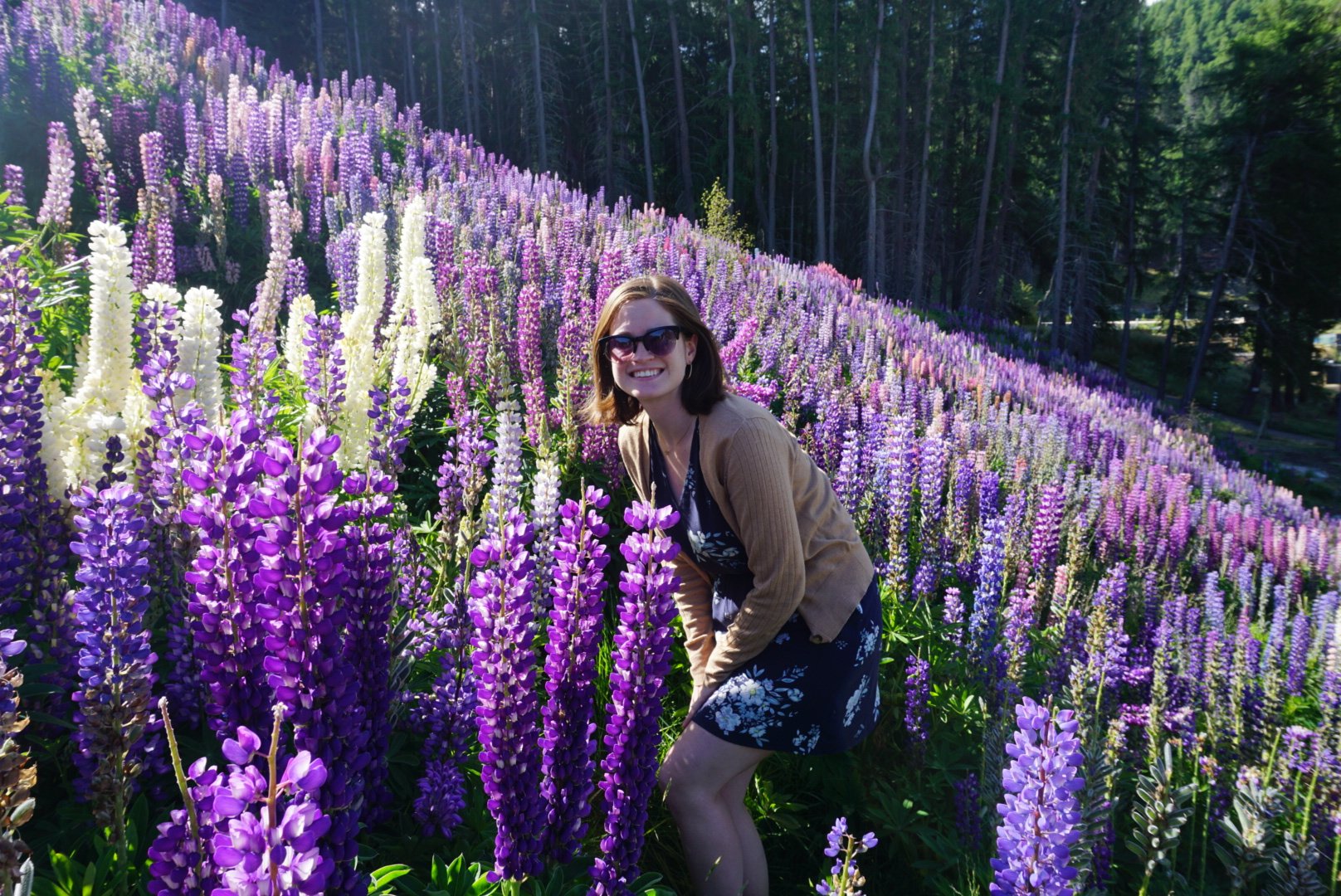
The observatory tour ended up being awesome. I’ve taken up a bit of a star photography in Vancouver over the last year and it was really interesting to learn about the night sky in the southern hemisphere. Orion and Sirius really dominate the sky here, but they are upsidedown in this hemisphere. They had some really powerful telescopes and we got to look at the jewel box star cluster and alpha centauri, which is the closest star to earth and actually two stars in one. Then they broke out the observatory telescope and we got to look at the middle star in Orion’s sword, which is actually a nebula of stars and very neat to see up close.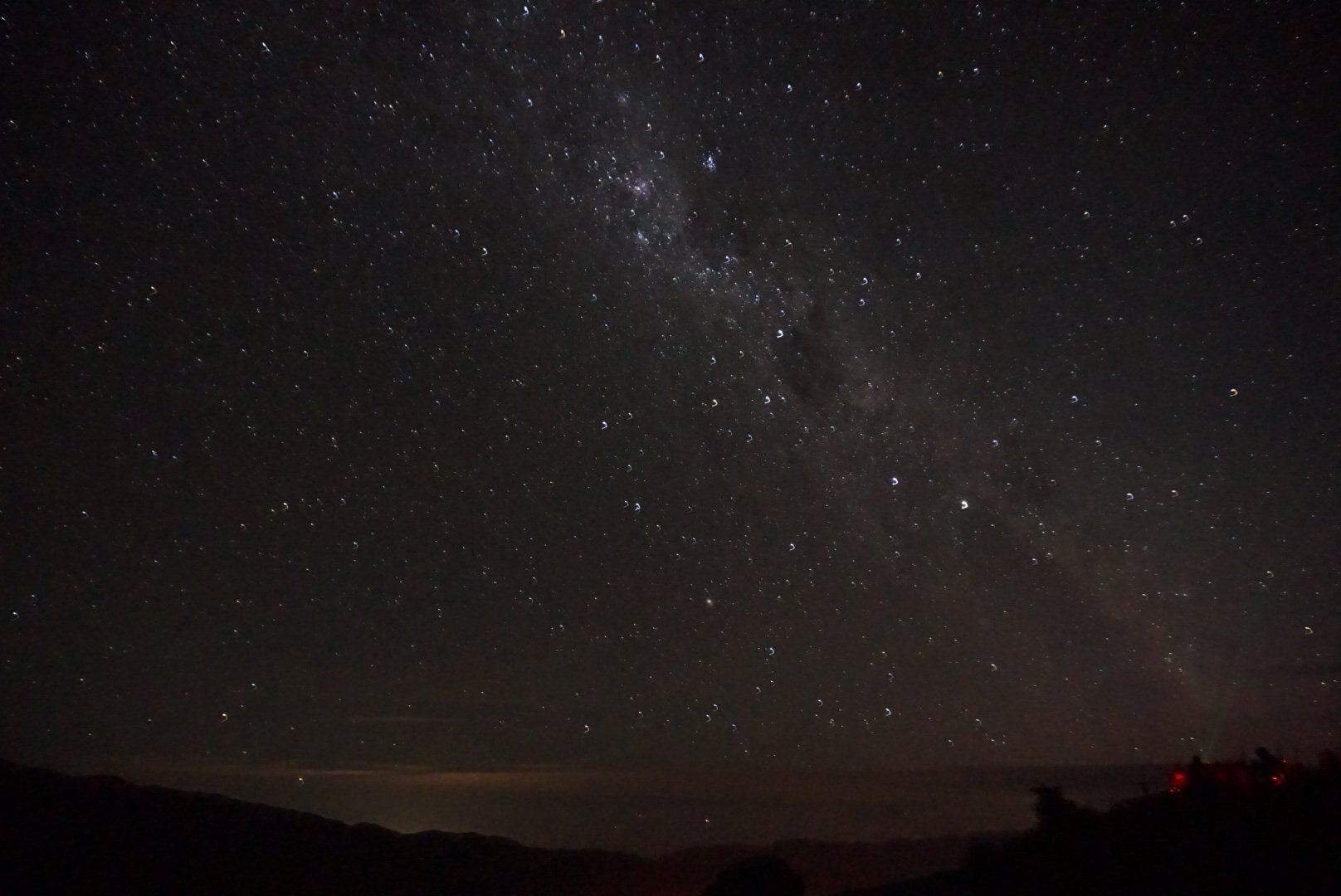
It made for a late night and we would have loved to sleep in the next day, but it was a big driving day because we had to travel all the way down to the far south to catch our ferry to Stewart Island. We drove all morning to get to Moeraki along the east coast. We stopped briefly to see the Moeraki boulders beach, and then visited the Kaitiki Lighthouse, which is popular for wildlife and had a bunch of fur seals and nesting birds. The highlight was right at the end of our walk when Seth spotted a yellow eyed penguin just chilling on the beach.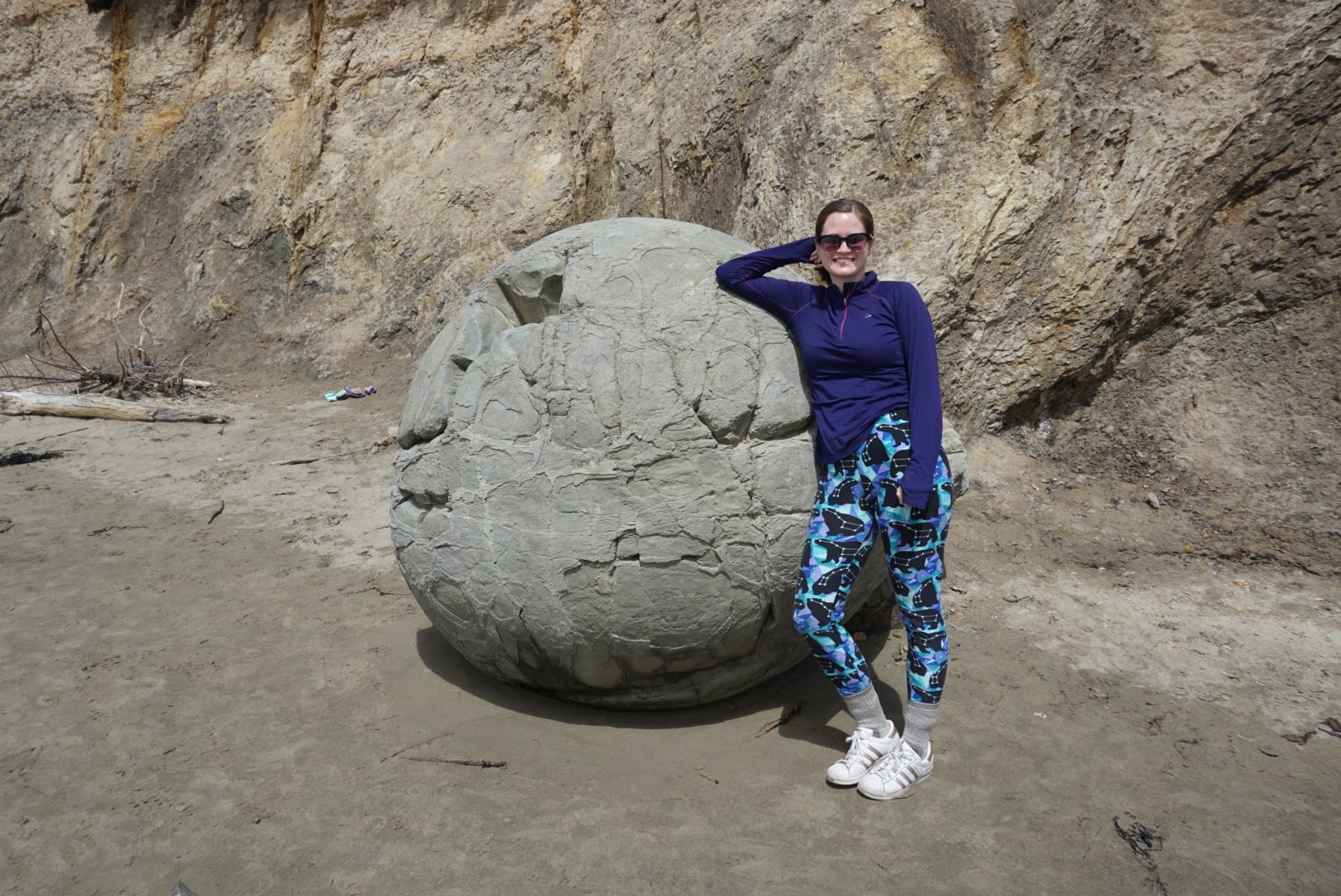
After that we drove another hour to Orokonui Ecosanctuary just outside of Dunedin for some more wildlife viewing. There’s birds and wildlife all over New Zealand, but this was evidentally the bird watching portion of the trip. New Zealander’s are very big on conservation and creating safe spaces for their native bird populations. So there are several sanctuaries all over the islands that are essentially fully enclosed, pest free areas. They gate the sanctuaries to protect them from introduced predators like rats, stoats, weasels, and possums.
The highlight from the Sanctuary was a takahe. I’ve learned the takahe’s story since then and I find it super fascinating, so indulge me for a minute. Basically the takahe were believed extinct for a long time until a single colony of them was discovered way up in the mountains in Fiordland National Park in 1948. The area was immediately protected and shut off to visitors and they worked on supporting the population to grow. Once it was deemed more sustainable, they started relocating some of the takahe to other parts of New Zealand to help them re-establish, mostly on predator free islands. The program has been doing well and while there’s still cause for concern, the department of conservation is hopeful about their increasing numbers.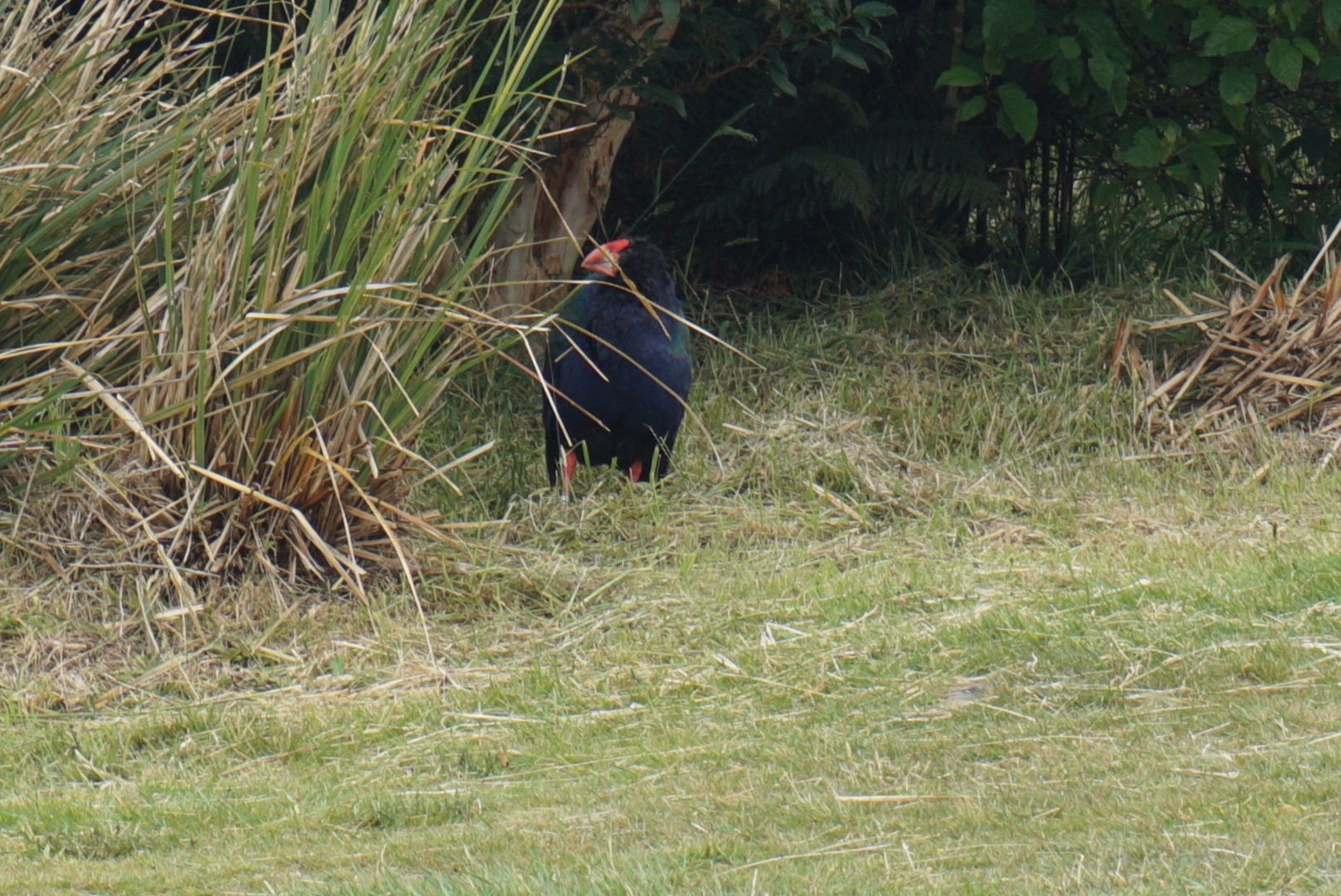
After the Sanctuary though the forecasted rain finally began and it was a wet drive out of Dunedin. Our destination for the night was Curio Bay. The yellow eyed penguins nest on the beach there and we were hoping to catch them returning to their nests at dusk and had booked a campsite next to the beach. We weren’t looking forward to camping in the rain again, so we were hopeful the rain would clear itself out. But the further south we went the worse it got and by the time we reached Curio Bay it was absolutely torrential downpour and high winds coming off the ocean.
It’s a tiny community, just one short road, and there’s no service anywhere along the road there. Almost all the limited hotels in the community were booked out, but we saw one vacancy listed on our drive through and quickly pulled in. It was a local family that rents out their garage suite and we happily forked over the cash that saved us from having to camp all night in the pouring rain. Best decision ever, absolutely no regrets. We did try to see the penguins still, to no avail, but there’s something really lovely about listening to the rain patter on the roof and being warm and dry in a bed you weren’t supposed to have.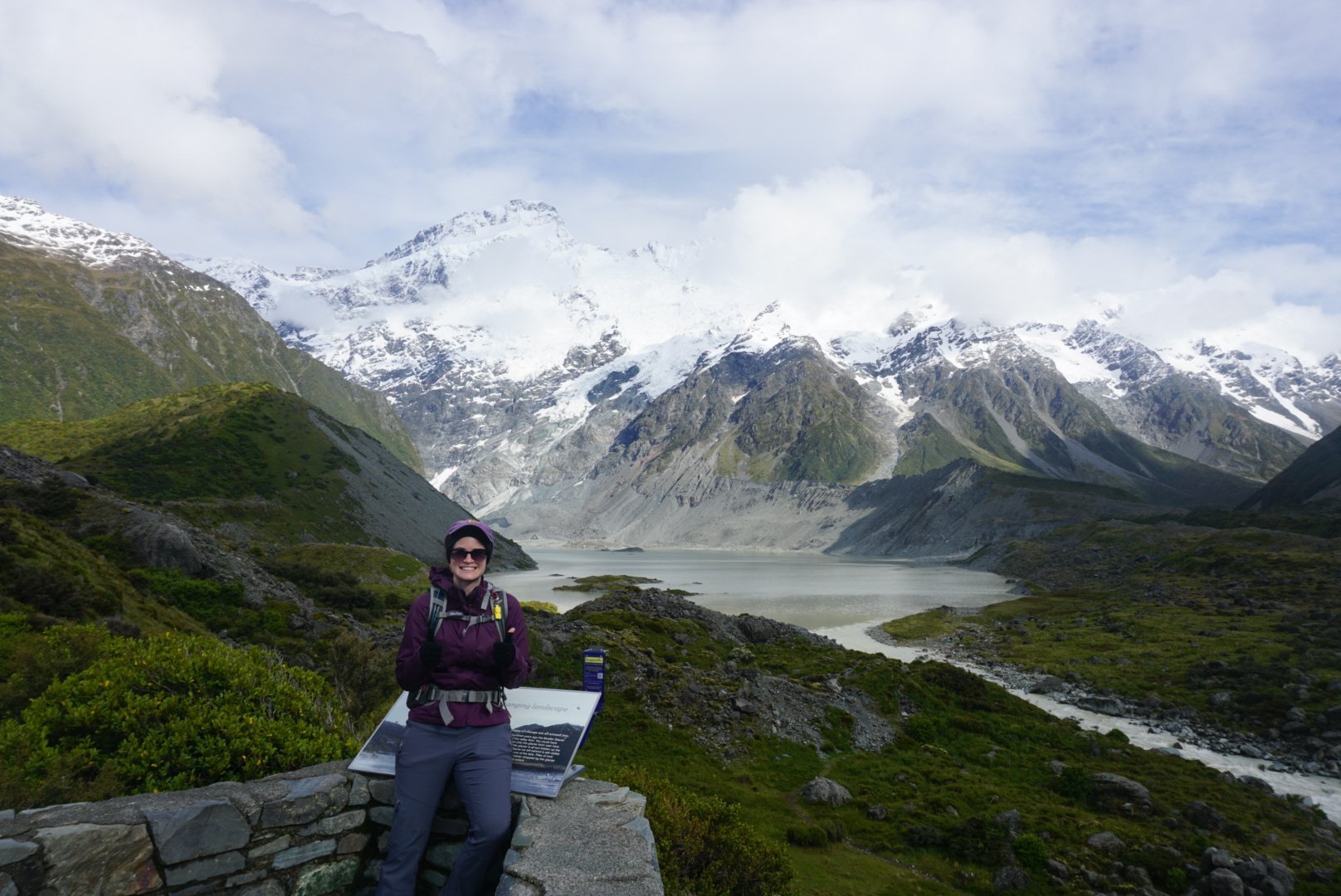
- Reblog
-
Subscribe
Subscribed
Already have a WordPress.com account? Log in now.